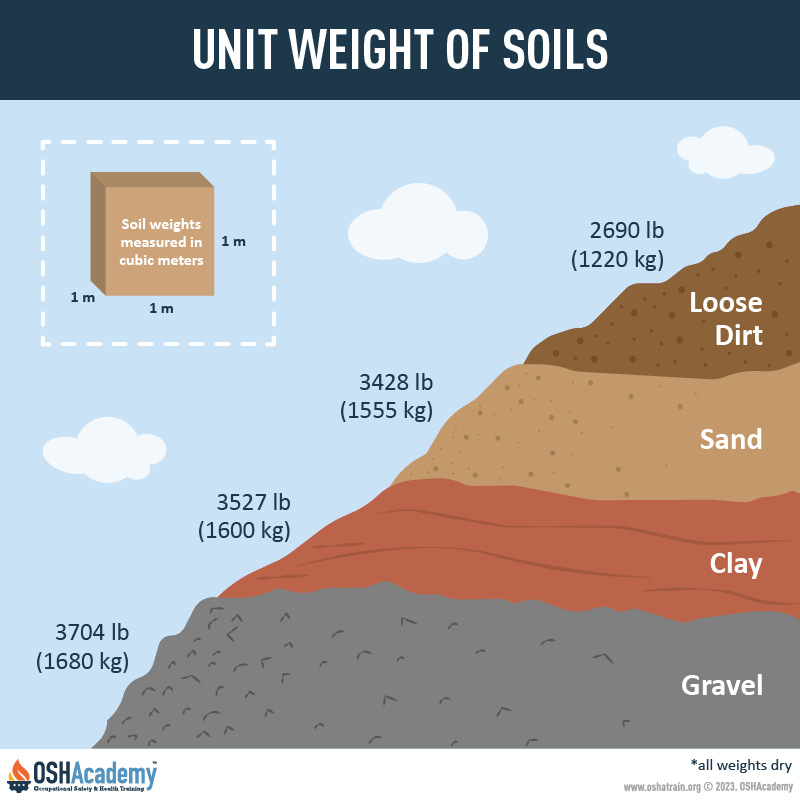Soil Mechanics
Toppling
In addition to sliding, tension cracks can cause toppling. Toppling occurs when the trench's vertical face shears along the tension crack line and topples into the excavation.
Unit Weight of Soils
The unit weight of soils refers to the weight of one unit of a particular soil. The weight of soil varies with type and moisture content. One cubic foot of soil can weigh from 110 pounds to 140 pounds or more, and one cubic meter (35.3 cubic feet) of soil can weigh more than 3,000 pounds.
The maximum weights will be reached when the soil is wet. See examples of the weight of one cubic meter for the five types soils:
- Loose dirt can weigh up to 2690 lb (1220 kg);
- Loam can weigh up to 2800 lb (1270 kg);
- Sand can weigh up to 3428 lb (1555 kg);
- Clay can weigh up to 3527 lb (1600 kg); and
- Gravel can weigh up to 3704 lb (1680 kg).
Knowledge Check Choose the best answer for the question.
2-3. Which soil type has the greatest maximum weight per cubic meter?
You forgot to answer the question!

